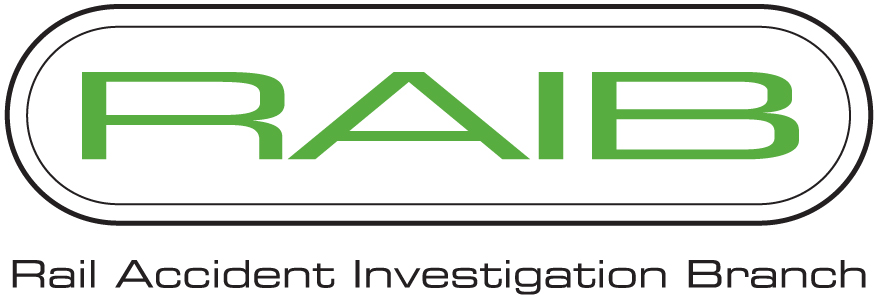Summary of learning - 2. Protection of track workers from moving trains - v6. May 2025
Published 2 April 2020
1. Purpose of this summary
The purpose of this document is to provide a repository of some of the most important areas of learning identified in RAIB’s investigations to date, cross-referenced to relevant reports. It therefore provides a reference source for those looking to understand real-world railway safety issues and potential control measures.
When preparing this document, RAIB has selected those issues which:
- have recurred in different RAIB investigations
- have still to be fully addressed
- could be a factor in the cause of a fatal accident
RAIB is aware that many of the issues raised have already been the subject of actions by duty holders when responding to RAIB recommendations, or are in the process of being addressed. The inclusion of a topic in this document should not be taken to mean that no action has been taken in response to relevant recommendations. However, its inclusion indicates that RAIB is of the view that the issue still needs to be actively managed by duty holders.
The current status of each recommendation made by RAIB can be checked by reference to the Index of RAIB recommendations, and details of the actions taken are published by ORR.
It is not the purpose of this document to quantify the risk associated with each of the identified safety issues. Readers seeking to understand the overall risk of harm associated with various dangerous events should refer to RSSB’s Annual Safety Performance Report. This presents historical information on actual harm caused, and estimates of risk based on extensive modelling.
2. Overview
In four tragic accidents which happened between November 2018 and February 2021, at Stoats Nest Junction, near Croydon; at Margam, Neath Port Talbot; at Roade, Northamptonshire; and Surbiton, south-west London, five members of railway staff died when they were struck by a train while they were at work on the track.
Before the accident at Stoats Nest Junction in November 2018, it had been nearly 5 years since a track worker was struck and killed by a train. However, in that time there were too many near misses in which workers had to jump for their lives at the last moment.
Work involving inspection and maintenance of the railway’s track, structures and signalling equipment must take place on and around the line. If this work is to be done while trains are running, automatic warning systems or human lookouts can be used to give warning of approaching trains. To protect a work site, the person in charge can arrange with the signaller for the line to be blocked to trains for short periods. For major planned works, the engineering staff can take possession of the line, blocking it to trains for a longer time. Following the accident at Margam in 2019 (report 11/2020), Network Rail launched a programme to reduce working with warnings given by a human lookout. As of January 2023, Network Rail data suggests lookout working was used in only around 1% of workbank activities.
When engineering possessions are set up, staff must go onto the line to place boards and detonators to mark the limits of the protected site and must return at the end of the work to remove this protection. In areas where the lines are electrified on the third rail system, two people are required to be present to carry out these duties. Staff will also have to go onto the track to fit and remove earthing straps and operate isolating switches in areas where overhead line electrification equipment is present.
Whatever the arrangements for protection, this type of work often involves small groups working without direct management supervision. Accurate planning, good communication and teamwork, continuous vigilance and adherence to rules are vital to keep people safe.
It is also important that leaders are able to spot local hazards, or circumstances that may differ from the plan, and take appropriate action to ensure that the risk is minimised.
3. Some statistics
Since 2005 there have been 67 accidents and incidents involving track workers and moving trains that have been investigated by RAIB (full reports, bulletins/safety digests and ongoing investigations). Of these, 10 have resulted in deaths, and 13 in injury to staff. This is an ongoing problem, which still needs to be addressed - 19 of the events have occurred in the last 5 years. Of the incidents investigated since 2005, 25 have taken place when lookout warning was the intended method of work, and a further 31 where the work was not planned to be on a line open to traffic. There is a list at the end of this document of all our investigations into accidents involving track workers.
4. Important areas for safety learning
The findings of RAIB’s investigation into the double fatality at Margam in July 2019 (report 11/2020) resulted in recommendations calling for substantial change in several areas: improvement in safe work planning processes and the monitoring and supervision of maintenance staff; a renewed focus on developing the safety behaviour of front-line track maintenance staff; use of independent experts to oversee initiatives on track worker safety; and improvements to safety reporting culture and management assurance processes.
The main themes relating to track worker safety which RAIB has been concerned about over the years are described below. There are other concerns which appear from time to time, but those listed below have been, and continue to be, the areas in which we believe more needs to be done to minimise the risk to people. In each area we have given an example which shows what the consequences can be if not enough attention is given to these vital factors.
4.1 Planning work
It is important that work is planned to minimise the need for it to be done on lines that are open to traffic. Separating people from trains remains the most effective way of reducing risk. Clever and co-ordinated planning can enable more work to take place on lines that are not open to traffic, which is safer and often more efficient. One such scheme, Network Rail’s ‘Safe and Effective Working’ project, set out to achieve this on parts of the LNE route. In our report on the near miss at Peterborough in 2018 (report 04/2019) we recommended more engagement with this process by Network Rail’s maintenance organisation.
On the West Coast Main Line in 2017, workers carrying out a structural examination of Dutton Viaduct found that it was difficult to gain access to the structure because the plan for the work had not taken into account dense vegetation and a fence. Consequently, they crossed the viaduct at track level and narrowly avoided being hit by a passenger train travelling at 125 mph (safety digest 18/2017).
Improvements to the planning of work generally were also recommended in the reports on an incident at Roydon in 2012 (report 07/2013), and an accident near Bulwell in the same year (report 20/2013). After a near miss at Shawford in 2016 (report 05/2017), we recommended that Network Rail should improve local management arrangements for planning on the route where the incident took place. Inadequate planning, in this case by a contractor, was also one of the causes of a near miss at Leighton Buzzard (safety digest 05/2020).
Near the village of Roade in 2020, a passenger train struck and fatally injured a track worker on the West Coast Main Line. RAIB’s investigation (report 03/2021) found that the worker involved had gone back onto the track after handing back a blockage of the line, which had been taken to isolate the overhead line equipment. This was a task which it was later appreciated did not need to be done every day. RAIB also found that the system of work in place was inadequate for the work being undertaken and did not specify adequate arrangements to encourage compliance with safety rules.
Near Surbiton in 2021, a passenger train struck and fatally injured a track worker who was one of a team of workers involved in undertaking a track inspection. RAIB’s investigation (report 05/2022) found that the inspection was planned to be completed while trains were running, with a safe system of work that used human lookouts. This was the least safe type of system of work which could be implemented, but its ongoing use had not been challenged in the years before the accident. RAIB also found that Network Rail had a programme in place to eliminate this form of lookout working but this had not yet led to changes at the depot where the inspection team worked.
Following the fatal accident at Margam, Network Rail established a safety task force with the aim of preventing further harm to track workers. An important workstream in this project was to move maintenance tasks from lines open to traffic into line blockages and possessions. While the rate of adoption varied across Network Rail’s routes, by the end of 2023, Network Rail data suggests over 99% of work activities were being done by staff working on lines closed to rail traffic.
At the current time, it is not yet clear what the impact of these changes will have on the frequency and severity of track worker incidents.
4.2 The quality of leadership on site
It is important to select and train leaders with the right qualities and to equip them to manage the hazards and local conditions that they actually encounter on site. It is possible to train people in skills and techniques to successfully direct and co-ordinate the activities of a team, but poor standards of leadership are a frequent factor in our investigations.
At Ruscombe in 2007 (report 04/2008) three people were involved in welding repairs to a crossing: a welder, a lookout, and a Controller of Site Safety (COSS). The COSS and the lookout deferred to the seniority and experience of the welder, who was very reluctant to interrupt his work to move clear of the line when trains passed on adjacent lines. As a result, the welder was taken unawares when a train was routed from an adjacent line through a crossover towards the place where he was working, and he was struck and killed. The issues identified during the investigation included the influence of peer pressure, the interaction between the welder and his less experienced colleagues, leadership and authority in small teams, and communications within the team.
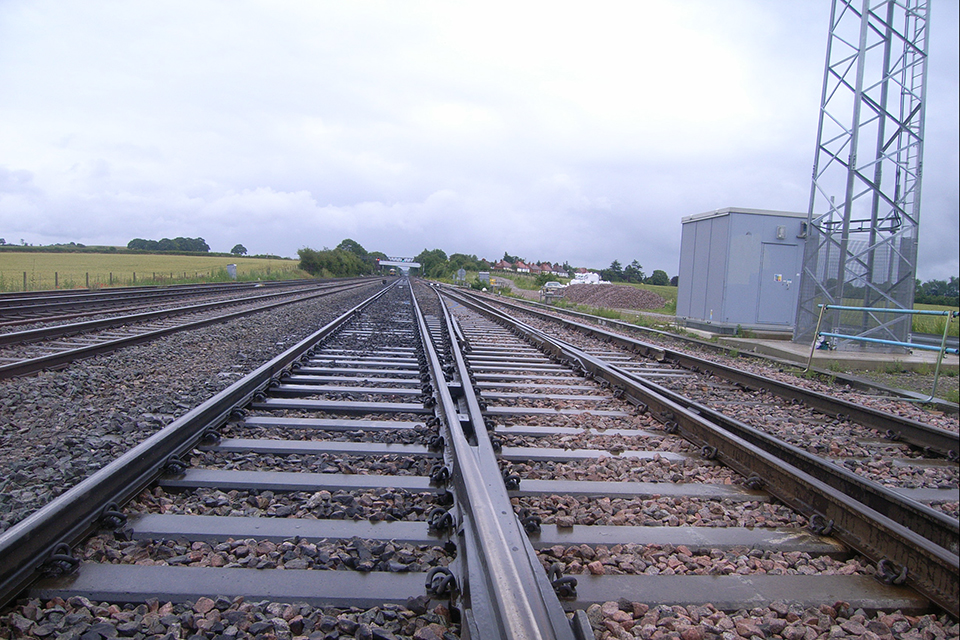
The site of the fatal accident at Ruscombe Junction.
It is also important that the COSS or Person in Charge (PIC) remain with their group to ‘personally observe and advise’ those under their control. RAIB has investigated a number of incidents, such as those at Newark North Gate (report 01/2015), Eccles (safety digest 05/2021), Paddington (safety digest 07/2022) and Penkridge (report 09/2023) where the person in charge of site safety was not present with those involved in the incident or accident, leading to a breakdown in safety. In other cases, such as the near miss at Uphill Junction (safety digest 02/2022) and Ynys Hir (safety digest 06/2019), the COSS was on site but not effectively controlling the actions of others within their group.
In the near miss at Littlehempston (safety digest 07/2024), the actions of the COSS put themselves, and later their group, at risk of being struck by a train.
Other investigations in which the quality of leadership, both strong and weak, has been a significant factor include Trafford Park (report 16/2006), Whitehall West Junction (report 15/2010), Cheshunt Junction (report 06/2011), Stoats Nest Junction (report 16/2012), Saxilby (report 21/2013), South Hampstead (report 20/2018), Peterborough (report 04/2019), and Margam (report 11/2020).
4.3 The supervision and monitoring of track workers
Following the railway’s operating rules and adhering to the planned safe system of work is fundamental to the safety of people working on the line. If staff adopt their own local practices, for reasons which may seem to them to be significant at the time, they run the risk of being caught out by hazards which they have not considered, or have forgotten. It is important that management arrangements are in place to monitor what is actually taking place out on the track, and to provide assurance to employers that their staff are behaving in a safe manner. At Cheshunt in 2010 (report 06/2011), a track worker was struck by a train as it crossed a junction. RAIB’s investigation found that unsafe working practices were in use by the team of workers, and that these had not been identified by local managers.
At Margam in 2019 (report 11/2020), the informal, unsafe practices that led directly to the death of two workers were likely to have been in use for some time, and had not been detected, monitored or addressed by local managers. Managers had relied on checking documents after the completion of work and had little time available for on-site checks. Network Rail’s focus on safety improvement through technological solutions and new planning processes had not adequately taken account of the variety of human and organisational factors that can affect working practices on site.
4.4 The way that information is presented to track workers
Track workers need to be given concise, accurate and relevant information (including documents and signs at site access points) to help with safe decision-making. RAIB first made a recommendation on this topic in our report on a collision at Acton West in 2008 (report 15/2009), in which a train struck equipment which had been placed on the track outside the limits of a possession. The signage at the access point that was used to get the equipment onto the railway did not give details of the track layout in the area. We recommended that Network Rail should develop and implement a programme for the provision of track layout information signage at all railway access points.
At South Hampstead in 2018, there was no signage at the access point used by a work group to get onto the track. The staff therefore had no visual indication of which lines were which, and placed equipment on the fast lines, which were open to traffic, instead of on the slow lines, which were under possession. While they were doing this, a train approached on the fast lines, and the staff managed to move their equipment and themselves clear of the line with around 2 seconds to spare (report 20/2018).
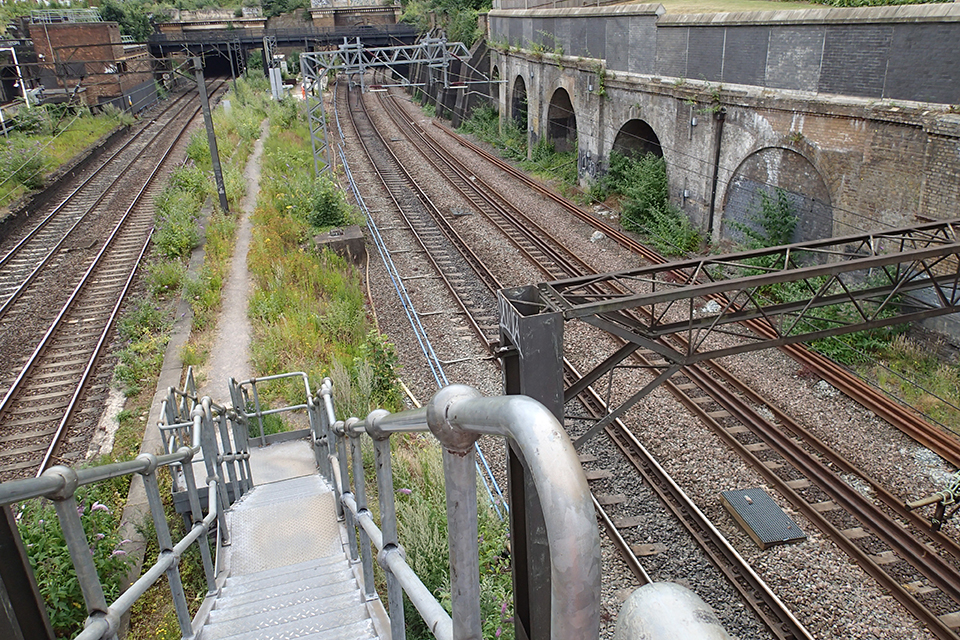
The view of the two sets of lines at South Hampstead from the access steps.
Poor presentation of information was also an important factor in the near misses at Sundon (safety digest 05/2019) and Llandegai Tunnel (safety digest 03/2021), both of which saw staff in the path of a train travelling at high speed after accessing track on the opposite side of the line to the side they expected.
At Morton Junction in 2024 (safety digest 02/2025), the COSS unintentionally blocked a section of line around 7 miles from their actual location, meaning their group accessed a line that was still open to traffic. This happened because the COSS had unknowingly used a safe work pack for a different location, after changes had been made to a production schedule without their knowledge. The COSS had not fully read the pack before using it, as they were familiar with the location and the task being undertaken.
4.5 Standards of lookout warning
As previously noted, unassisted lookout systems of work are now rarely used on Network Rail infrastructure. However, the practice still remains on other systems, and the investigation into a near miss at Pelaw (report 13/2018) on Tyne and Wear Metro, and the serious injury to a lookout at Chalfont and Latimer (report 05/2023) on London Underground, show that this is not just a mainline consideration.
When work is taking place on lines that are open to traffic, it is vital that there are robust arrangements for warning staff about approaching trains in sufficient time for them to move to a place of safety. People who plan and implement lookout protection need the right skills to do the job, and these skills should be properly developed and assessed. Often the same person is also responsible for leading the work activity, and it is important that they have the local knowledge necessary to plan and lead the work, as well as having access to all the information needed for each job. At some locations, trains can be seen approaching a long time before they reach the site of work. How this is dealt with can be crucial to the safety of the workers, as well as affecting their ability to get on with the job.
Problems with lookout protection have been a factor in many accidents and incidents that we have investigated. Among those where it was a significant issue are Tinsley Green (report 43/2007), Leatherhead (report 19/2008), Kennington Junction (report 29/2009), Dalston Junction (report 30/2009), Roydon (report 07/2013), Redhill (report 06/2015), Hest Bank (report 08/2015) and Peterborough (report 04/2019). The Peterborough report includes a full list of all the events that we have investigated in which the planned system of work used lookout warning, with a description of what happened and the causes.
The person appointed as lookout is also at risk and must be able to do their work from a position of safety.
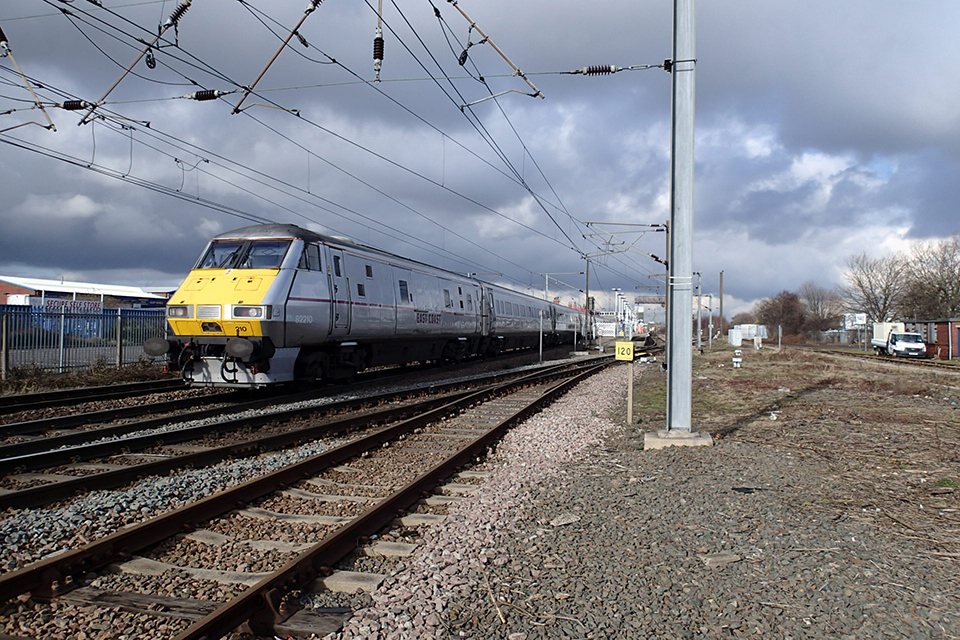
The site of the fatal accident at Newark.
At Newark on the East Coast Main Line in 2014, the person who was acting as lookout moved into the path of an approaching train and was killed. There had been a breakdown in safety discipline and vigilance at the work site, and the COSS who was in charge of the work was not monitoring the actions of the team (report 01/2015).
In 2017, RAIB carried out a class investigation into accidents and near misses involving trains and track workers outside possessions (report 07/2017). The need to improve competence in local knowledge was a significant finding of this investigation, and we recommended that Network Rail should review its requirements in this area and consider requiring enhanced local knowledge for people implementing lookout protection.
4.6 The role and supervision of staff who install possession protection equipment
Engineering work on the track that affects the safety of the line is done under the protection of a possession of the affected line(s). Part of the protection arrangements for a possession is the placing of possession limit boards and detonators on the track at the extremities of the affected area. Staff who have to place and remove this equipment can be at risk from train movements and electrical hazards while they are doing this work. RAIB believes that the risk associated with this work can be managed better, not least by considering whether the use of the protection equipment itself is really necessary.
At Stoats Nest Junction, on the line between London and Brighton, near Purley in November 2018, a member of staff was killed by a train shortly after they had placed protection equipment for a routine possession, and had then moved outside the protected area onto an open line (report 07/2019).
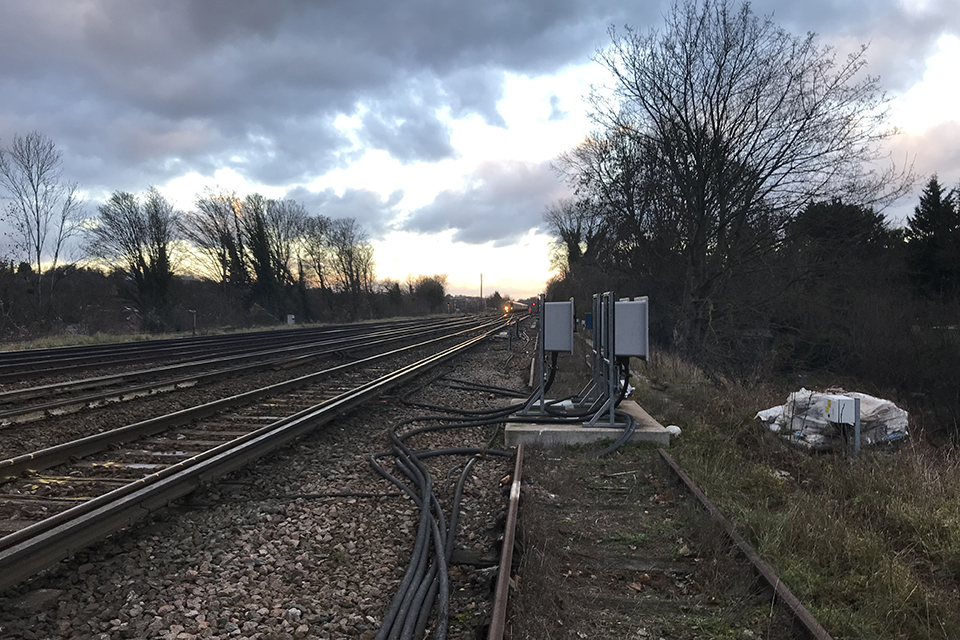
Outside the limits of protection at Stoats Nest Junction.
Previous investigations in which we have highlighted the risk associated with the possession protection role have included the fatal accident at Reading (report 21/2008) and near miss incidents at Camden Junction South (report 16/2017), Gatwick (report 12/2019), Sundon (safety digest 05/2019) and Teignmouth Boat Yard (safety digest 03/2023).
4.7 Management and supervision of contingent labour
The person who was killed at Stoats Nest Junction (report 07/2019) was working on a ‘zero hours’ contract for a contingent labour supplier. The labour supplier did not carry out any checks on the hours of work of such staff. RAIB believes that better measures are needed to ensure that zero hours staff are suitably supervised and monitored, particularly in relation to hours of work.
The management of the performance of people working for contingent labour suppliers was also highlighted in the investigation into the fatal accident at Saxilby (report 21/2013).
4.8 Willingness of staff to challenge unsafe practices
RAIB’s investigations have found that staff, particularly those on zero hours contracts, can be unwilling to challenge unsafe working practices. More needs to be done to promote a just culture in which it is normal and acceptable to do this, regardless of the type of employment contract. This would mitigate the potentially adverse effects that client-contractor relationships can have on the willingness of contract workers to challenge unsafe systems of work.
At Egmanton in 2017 (report 11/2018), contract staff working on lifting and packing ballast on the East Coast Main Line under the direction of a Network Rail team leader had little confidence in the systems of work that the team leader was adopting. However, they felt unable to challenge him because they feared losing work, and because of peer pressure from the rest of the group to continue working. A series of misunderstandings and miscommunications resulted in the group working without anyone acting in the role of lookout, and having to jump clear of the line with less than 2 seconds to spare when a train approached at 125 mph.
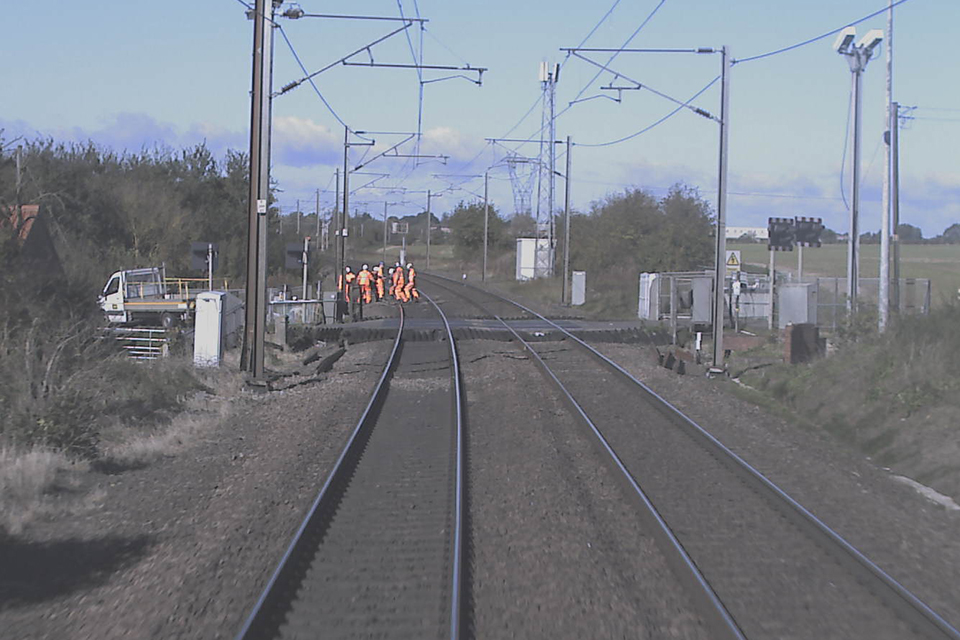
The work group clearing the line at Egmanton, less than two seconds before a train reached the place where they had been working.
We have also seen evidence of unwillingness to challenge unsafe practices in other investigations, notably at Saxilby (report 21/2013) and South Hampstead (report 20/2018 - see above).
5. Rail industry’s strategic safety groups
Relevant rail industry groups working in this field include the ongoing work of Network Rail’s Safety Task Force, and the oversight of the ‘Track Worker Expert Group’, both of which were established after the accident at Margam in 2019.
6. Relevant RAIB reports and bulletins/digests
| Report (R) / Bulletin (B) / Safety Digest (SD) | Location (on Network Rail infrastructure unless shown otherwise) | Intended safe system of work (G = ‘protected’, R = ‘warning’) | Date | Consequence |
| R16/2006 | Trafford Park | None/unclear (R) | 26/10/2005 | Fatal |
|---|---|---|---|---|
| R09/2006 | Radcliffe (Metrolink) | Unassisted lookout (R) | 08/11/2005 | Near miss |
| R43/2007 | Tinsley Green Junction | Unassisted lookout (R) | 17/03/2007 | Near miss |
| R04/2008 | Ruscombe Junctionn | Unassisted lookout (R) | 29/04/2007 | Fatal |
| R19/2008 | Leatherhead | Unassisted lookout (R) | 29/08/2007 | Serious injury |
| R19/2009 | Grosvenor Bridge | Unassisted lookout (R) | 13/11/2007 | Serious injury |
| R21/2008 | Reading | Walking from site (R) | 29/11/2007 | Fatal |
| R15/2009 | Acton West | Possession (G) | 24/06/2009 | Trolley struck |
| R29/2009 | Kennington Junction | Unassisted lookout (R) | 23/05/2008 | Serious injury |
| R23/2009 | Stevenage | Possession (G) | 07/12/2008 | Minor injury |
| R30/2009 | Dalston Junction | Unassisted lookout (R) | 30/03/2009 | Minor injury |
| B02/2010 | Kentish Town | Possession (G) | 27/10/2009 | Trolley struck |
| R15/2010 | Whitehall West Junction | Unassisted lookout (R) | 02/12/2009 | Fatal |
| R06/2011 | Cheshunt Junction | Unassisted lookout (R) | 30/03/2010 | Near miss |
| R03/2012 | Clapham Jn - Earlsfield | Possession (G) | 08/03/2011 | Near miss |
| R16/2012 | Stoats Nest Junction | Possession (G) | 12/06/2011 | Serious injury |
| B01/2012 | North Kent East Junction | Unassisted lookout (R) | 02/02/2012 | Minor injury |
| R07/2013 | Roydon | Unassisted lookout (R) | 16/07/2012 | Near miss |
| R20/2013 | Bulwell | Individual walking alone (R) | 06/08/2012 | Serious injury |
| R21/2013 | Saxilby | Line block (G) | 04/12/2012 | Fatal |
| B05/2013 | West Drayton | Unassisted lookout (R) | 22/03/2013 | Serious injury |
| B04/2013 | Poole | Walking from site (R) | 12/07/2013 | Minor injury |
| R01/2015 | Newark North Gate | Unassisted lookout (R) | 22/01/2014 | Fatal |
| R06/2015 | Redhill | Unassisted lookout (R) | 24/06/2014 | Serious injury |
| R08/2015 | Hest Bank | Lookout Operated Warning System (R) | 22/09/2014 | Near miss |
| R20/2015 | Heathrow Tunnel Jn (2 incidents) | Possession (G) | 28/12/2014 | Near miss |
| SD04/2016 | Maesyfelin Bridge | Unassisted lookout (R) | 08/04/2016 | Near miss |
| R05/2017 | Shawford | Unassisted lookout (R) | 24/06/2016 | Near miss |
| SD06/2017 | Surbiton | Unassisted lookout (R) | 02/11/2016 | Near miss |
| R16/2017 | Camden Jn South | Possession (G) | 28/02/2017 | Near miss x 2 |
| SD09/2017 | Ascot | Possession (G) | 07/04/2017 | Near miss |
| SD12/2017 | Great Chesterford | Unassisted lookout (R) | 21/04/2017 | Near miss |
| SD19/2017 | Raynes Park | Unassisted lookout (R) | 22/08/2017 | Minor injury |
| SD16/2017 | Clapham, N. Yorkshire | Line block (G) | 25/08/2017 | Trolley struck |
| SD18/2017 | Dutton Viaduct | Not on or near the line (‘separated’) (G) | 18/09/2017 | Near miss |
| R11/2018 | Egmanton | Train Operated Warning System (R) | 05/10/2017 | Near miss |
| SD02/2018 | Clapham Junction | Line block (G) | 17/01/2018 | Near miss |
| R13/2018 | Pelaw North Junction (Tyne and Wear Metro) | Unassisted lookout (R) | 21/02/2018 | Near miss |
| R20/2018 | South Hampstead | Possession (G) | 11/03/2018 | Near miss |
| SD11/2018 | Dundee | Line block (G) | 10/07/2018 | Near miss |
| R04/2019 | Peterborough | Unassisted lookout (R) | 20/07/2018 | Near miss |
| R07/2019 | Stoats Nest Junction | Possession (G) | 06/11/2018 | Near miss |
| R12/2019 | Gatwick | Possession (G) | 02/12/2018 | Near miss |
| SD05/2019 | Sundon | Possession (G) | 12/12/2018 | Near miss |
| SD06/2019 | Ynys Hir | Unassisted lookout (R) | 02/04/2019 | Near miss |
| R11/2020 | Margam | Line block (G) | 03/07/2019 | Fatal x2 |
| SD03/2020 | Kirtlebridge | Lookout Operated Warning System (R) | 14/11/12019 | Near miss |
| R03/2021 | Roade | Line Block (G) | 08/04/2022 | Fatal |
| SD05/2020 | Leighton Buzzard | Individual Working Alone (R) | 16/06/2020 | Near miss |
| R06/2021 | Rowlands Castle | Line block (G) | 19/12/2020 | Near miss |
| R05/2022 | Surbiton | Unassisted lookout (R) | 09/02/2021 | Fatal |
| SD03/2021 | Llandegai Tunnel | Line block (G) | 13/02/2021 | Near miss |
| SD05/2021 | Eccles | Line block (G) | 22/07/2021 | Near miss |
| Report 05/2023 | Chalfont & Latimer (London Underground) | Unassisted lookout (R) | 15/04/2022 | Minor injury |
| Report 09/2023 | Penkridge | Line block (G) | 10/07/2022 | Near miss |
| SD07/2022 | Paddington | Line block (G) | 18/07/2022 | Near miss |
| SD02/2023 | Bulkington | Line block (G) | 15/11/2022 | Near miss |
| SD03/2023 | Teignmouth Boat Yard | Line block (G) | 14/02/2023 | Near miss |
| 12/2024 | Brading, Isle of Wight | Possession (G) | 02/11/2023 | Trolley struck Minor injury |
| SD01/2024 | Fishguard | Separated (G) | 04/01/2024 | Near Miss |
| SD04/2024 | Braybrooke | Possession (G) | 06/02/2024 | Minor Injury |
| SD07/2024 | Littlehempston | Separated (G) | 13/03/2024 | Near miss |
| SD05/2024 | Euxton Junction | Line block (G) | 14/03/2024 | Near miss |
| 06/2025 | Chiltern Green | Separated (G) | 23/04/2024 | Near miss |
| 07/2025 | North Rode | Possession (G) | 26/05/2024 | Trolley struck |
| Ongoing investigation | Port Glasgow | - | 26/05/2024 | Injury |
